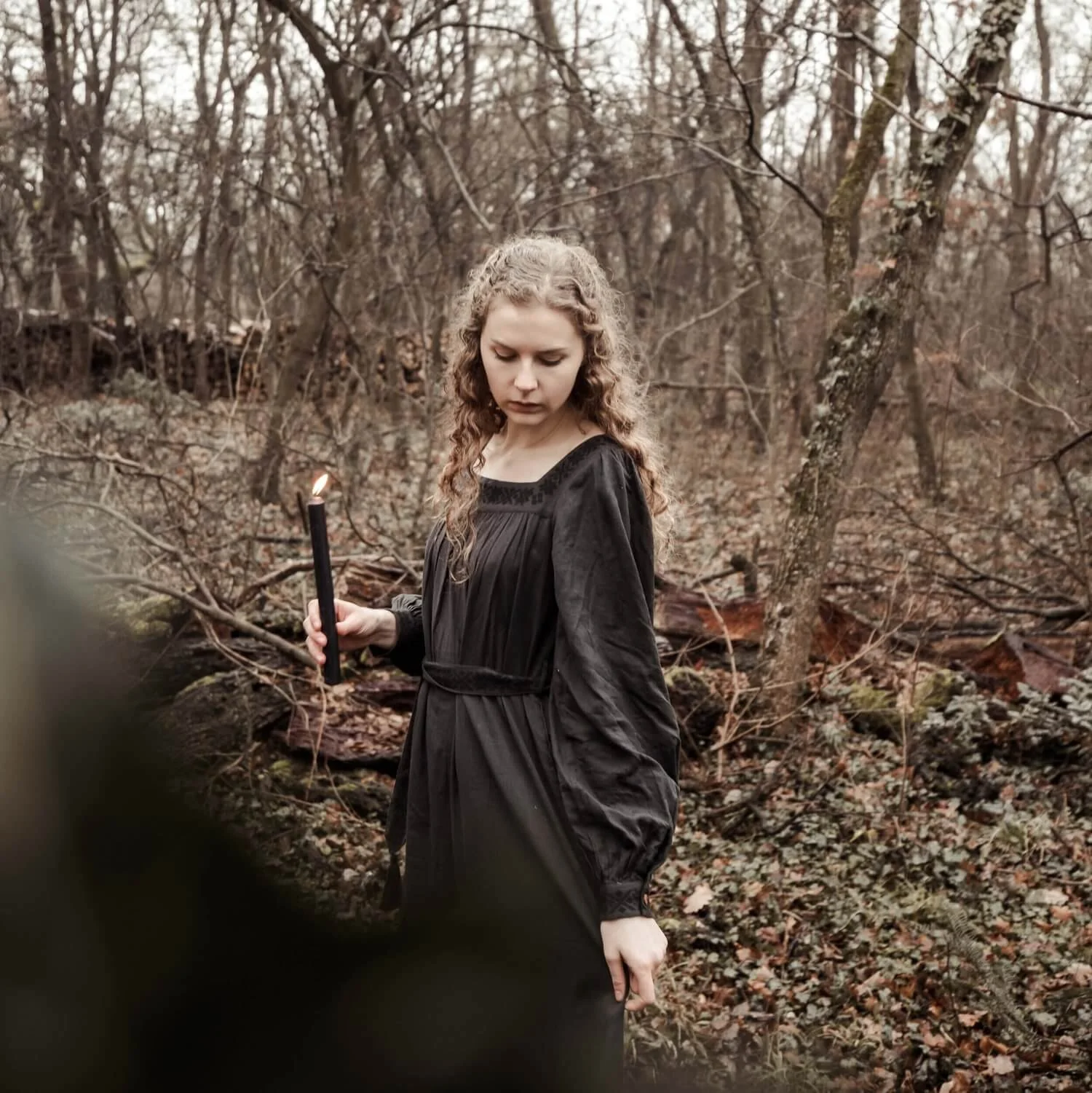The Goddess of the River Severn
I'm always fascinated by stories where nature and humans intersect. Our ancestors did worship the land and saw the human side of natural forces. Yet some stories are not so intertwined in layers of mythology. Sometimes, stories are exactly as they seem.
Mountains can be protective goddesses, and the sky can bring rain and abundance, but by the same token, some stories are cultural renditions of actual events. The famous poem, The Brus, for example, details how Robert the Bruce defeated the English and became the King of Scotland.
The story of Sabrina, the drowned princess, has many cultural layers. It's a story about warring factions and jealous wives, about king and country. It's also a story about how the River Severn got its name.
I wrote a prelude to this a while ago in this Instagram post, so I thought it was about time to dissect this myth further and go more into detail.
The Story of Sabrina, goddess of the Severn
The story of Sabrina and the River Severn dates back to at least the 2nd century AD when the name Sabrina was first recorded by the Romans. Even then, the Romans recorded a Latinized version of the river name given by the locals, meaning that the story had to have survived from an earlier time.
In Welsh, Afon Hafren is the local name for the River Severn that harks back to a legendary princess who is said to live beneath its waters. The name Hafren was first recorded in the 12-century Historia Regum Britanniae by Geoffrey of Monmouth and reveals the deep political tensions of early medical Wales.
In Geoffrey of Monmouth's tale, Hafren was the beautiful, bastard daughter of King Locrin of the Britons by his secret lover, a Germanic princess named Estrildis.
Estrildis had been abducted by Humber the Hun and brought to Britain during their invasion following King Brutus' death. Eventually, the Hun invasion was suppressed by King Locrin, who fell in love with Estrildis upon discovering her in one of Humber's ships.
One day, Locrin divorced his wife from an arranged marriage, Gwendolen, daughter of the King of Cornwall, and married his secret foreign lover, Estrildis, causing the dishonored ex-wife to raise a Cornish army against him. So torn with jealousy and rage, she threw Estrildis and her daughter, Hafren, into the river and drowned them.
Hafren then became the name of the infamous river. Her memory was preserved by poets in later centuries such as Edmund Spender in The Faerie Queen (1590) and Milton in his Sabrina Fair poem from masque Comus (1634), that transformed her into a water nymph.
The ancient history of the River Severn
The River Severn, or Afon Hafren in Welsh, is one of Britain's most renowned rivers. Its name was one of the first recorded in the 2nd century AD as Sabrina, a Latinized version of an earlier Celtic name thought by some scholars to be Samarosina meaning "land of summertime fallow”.
The river is one of the most voluminous flows of water in all of England and Wales. It commonly floods, causing destruction and death in its path. Historically, flood levels have been recorded both at Worcester and Shrewsbury since the late 17th century, with flood levels recorded on Watergate at Worcester Cathedral since 1672. At the cathedral, 20 floods are marked on the wall, leading to reason that flooding along the Severn must have always been a common and fearful occurrence.
Going back further through time, the region of the Upper Severn Valley near Clun Hills in Shropshire was inhabited in the Late Neolithic/Early Bronze age. Archaeologists even found sparse evidence of funerary burials of specific people in a ring ditch between 3000BC - 2750BC. Although there are natural boundaries here between the hills and the river, there is no suggestion that this region held any unified cultural identity in prehistory.
In the early Bronze age, the area around the Severn shows much more activity, and two possible henges were discovered close by with numerous possible stone circles near Clun Hills as well as arrowheads.
There was a Roman rampart unearthed closeby to the Severn, meaning that the river was important for the Romans. That is likely why they chose to directly translate the name of the river from the locals, and preserve with it the tale that came with it.
Over many centuries, the river also came to divide England and Wales. It was the grounds of war between the two sides, especially in the Elizabethan era when the division between Welsh and Englishmen was sharp.
Decoding the legend of Sabrina
Tracing back to the roots of the tail, the story of the goddess Sabrina and the River Severn is fundamentally a story about a woman that is given to the river and becomes a part of it.
A similar tale is mirrored in the story of Boann or Boand, the Irish mother goddess of the River Boyne.
“As thrice she walked round, about the well heedlessly, three waves burst from it, whence came the death of Boand. They came each wave of them against a limb, they disfigured the soft-blooming woman;...Every way the woman went the cold white water followed from the Sid to the sea (not weak it was), so that thence it is called Boand.”
Boann goes to the magical Well of Segais, despite being forbidden by her husband, Nechtan. When she gets there, the water overpowers her and she is torn limb from limb until she becomes one with the water, and transforms into the River Boyne.
In some accounts, Boann (the River Boyne) goes to her husband Nechtan (the well) and is overcome and merges with the water, which clearly shows the natural process of a river flowing out from a well.
The association between women and water goes back to the very dawn of time. Water goddesses in all their forms articulate a delicate balance between chaos and nourishment.
River goddesses are especially powerful since rivers provide life, nurturing, and sustenance. They symbolize life and fertility and reveal a glimpse into the ancient attitude towards the unpredictability of living close to rivers.
Without appeasement, rivers can flood severely and cause too much destruction.
Was Sabrina, goddess of the river Severn, real?
According to academic sources, there is no recorded evidence that gives a name to the river prior to Geoffrey of Monmouth's tale. While it’s certainly possible that the name was just known aurally, we also don’t have any folk story evidence for this either.
Looking at the original tale, Hafren is described simply as a princess who drowns. She originally had no fantastical superpowers but was described as an ordinary woman.
It wasn't until the 1600s that the poet, Milton, named Hafren a river nymph and gave her magical attributes. Put simply, time and mystique transformed her from an ordinary princess into a wonderous river nymph.
Of course, the powerful symbolism between women and rivers cannot be overlooked. And the mirroring of Boann's tale to Sabrina's is undeniable. Her tale could be a simple one describing the violent flooding of the river paired with historical events of foreign invasion.
Perhaps the truth is lost beyond the sands of time, or perhaps Hafren was a real Brythonic princess, who drowned in the river and was forever immortalized.








Saint Winifred‘s mythology and history go back further than her medieval tale.